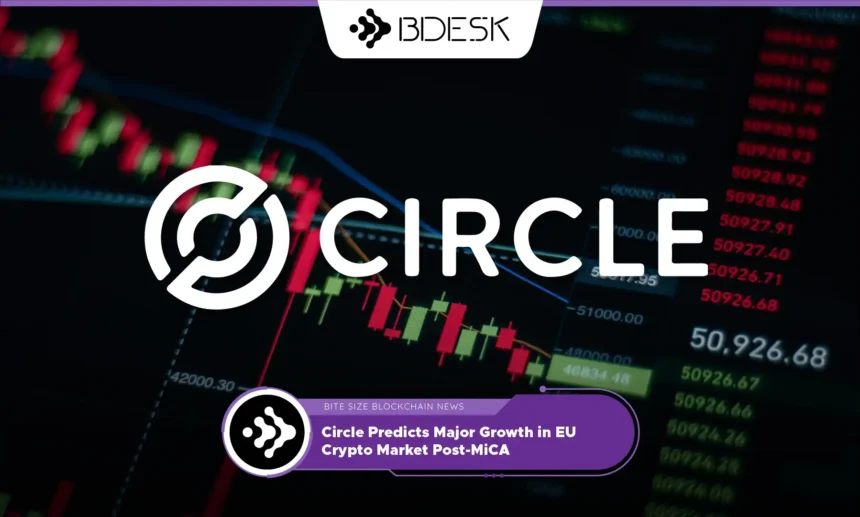Circle anticipates significant changes in the EU’s crypto and stablecoin markets, driven by MiCA regulations, by late 2025.
Circle Expects Major Changes in EU Crypto Market
Patrick Hansen, Circle’s European strategy director, predicts a massive transformation in the EU’s crypto and stablecoin markets by late 2025. Hansen shared this insight during the European Blockchain Convention in Barcelona, emphasizing that the EU’s new regulatory framework, the Markets in Crypto-Assets Regulation (MiCA), will be a key driver of this shift.
MiCA Regulation: A Turning Point for EU Crypto
MiCA represents a significant change in how the European Union regulates digital assets. The framework establishes clear rules for crypto exchanges, stablecoin reserves, and the broader crypto ecosystem. Hansen explained that MiCA provides comprehensive guidelines for governments, institutions, and investors, setting the stage for future growth in the sector.
Circle’s Role in MiCA Compliance
Circle has been at the forefront of adapting to MiCA’s guidelines. Its stablecoin, USDC, was one of the first to receive MiCA’s inaugural stablecoin license. Hansen highlighted that the compliance process for USDC was unique compared to other regions. Circle’s issuer worked with regulators for nearly two years before gaining approval, marking a milestone in Circle’s European expansion.
France Grants Circle an EMI License
In addition to its success with MiCA, Circle applied for an Electronic Money Institution (EMI) license in France. The Autorité de Contrôle Prudentiel et de Résolution, France’s banking watchdog, accepted the application, further solidifying Circle’s presence in the EU market. This approval is another step in Circle’s goal to increase its footprint across Europe.
EURC Sees Significant Growth
Circle’s euro-pegged stablecoin, EURC, has experienced remarkable growth since gaining regulatory approval in July. Hansen noted that EURC has increased by 60-70%, with its market cap now exceeding 67 million euros. MiCA’s rules have contributed to this growth, and Hansen expects further expansion in the coming year.
Outlook for Stablecoins in the EU
Looking ahead, Hansen foresees stablecoins playing a crucial role in the EU’s financial landscape. He expects that the demand for euro stablecoins, including EURC, will continue to rise due to MiCA’s favorable regulatory environment. “We believe that in the European Union, for our euro stablecoin, but for euro stablecoins overall, we can expect at least significant growth in the next 12 months,” Hansen stated.
Circle’s Global Ambitions
As Circle cements its position in Europe, the company is also pursuing growth in the U.S. Circle’s CEO, Jeremy Allaire, is pushing forward with plans for an initial public offering (IPO). As part of this strategy, Circle relocated its global headquarters to One World Trade Center in New York City, placing it alongside financial giants like Goldman Sachs. The move aligns with its goal of expanding its influence on both sides of the Atlantic.
The Future of Crypto Regulation in Europe
Circle’s progress under MiCA underscores the potential for stablecoins to thrive in the EU. As regulations evolve, the crypto market in Europe will likely see further advancements, making it a key player in the global blockchain ecosystem. Its commitment to compliance and innovation positions it to capitalize on these developments.
Disclaimer:
The information provided on 13Desk is for informational purposes only and should not be considered financial advice. We strongly recommend conducting your own research and consulting with a qualified financial advisor before making any investment decisions. Investing in cryptocurrencies carries risks, and you should only invest what you can afford to lose. 13Desk is not responsible for any financial losses incurred from your investment activities.











